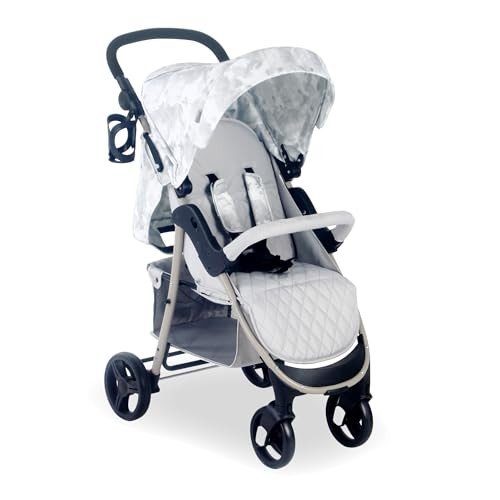Then You've Found Your Pushchair And Pram ... Now What?
Understanding Pushchairs and Prams: A Comprehensive Guide
When it concerns baby movement, the terms “pushchair” and “pram” are frequently utilized interchangeably. Nevertheless, they represent unique types of baby carriers, each crafted for particular stages of a child's advancement and varied parental needs. Pushchairs And Prams explores the vital distinctions between pushchairs and prams, their features, types, and factors to consider for new moms and dads.
What is a Pushchair?
A pushchair, typically called a stroller in some areas, is created for children who can stay up individually. Usually, pushchairs are modern-day, lightweight, and have a seat that can be reclined for added comfort. They might also feature a five-point harness to guarantee the child's safety while on the go.
Key Features of Pushchairs
- Lightweight Design: Most pushchairs are made from lighter materials, making them easy to navigate and transfer.
- Adjustable Seats: Many models use recline options, accommodating resting or active positions.
- Canopy: Most pushchairs come equipped with a sunshade or canopy to secure the child from sun exposure.
- Storage Space: They normally consist of a lower storage basket, ideal for holding diaper bags or shopping.
Typical Types of Pushchairs
- Requirement Pushchairs: Traditional alternatives suitable for children who can sit individually.
- Umbrella Strollers: Lightweight, compact, and simple to fold; ideal for taking a trip.
- All-Terrain Strollers: Built with bigger wheels for off-road abilities and smooth trips on diverse surface areas.
- Travel Systems: Combines a stroller and an infant safety seat, allowing moms and dads to move their kid seamlessly.
What is a Pram?
A pram, short for “perambulator,” is primarily designed for babies, generally from birth until roughly six months. Prams are structured with a flat lying position that supports a newborn's anatomy, ensuring they are nestled properly.
Key Features of Prams
- Flat Bed Design: Prams have a completely flat bed, which is important for young babies who need to lie flat for convenience and health.
- Stylish Aesthetics: Many prams boast vintage or timeless styles, often seen with luxurious materials and appealing finishes.
- Suspension System: Quality prams frequently consist of a suspension system to supply a smoother trip over rough surface.
- Extended Canopy: Extended sun protection and rain covers prevail.
Typical Types of Prams
- Classic Prams: Featuring a traditional style, these are typically styled to stimulate nostalgia.
- Convertible Prams: These can quickly change from a pram to a pushchair and normally grow with the child.
- Light-weight Prams: More compact than traditional prams, making them easier to transport.
Differences Between Pushchairs and Prams
Feature
Pushchair
Pram
Usage Case
For kids who can stay up
For newborns and babies
Style
Upright seat with reclining option
Flat bed for resting
Weight
Normally lighter
Much heavier due to strong building and construction
Compactness
Folds easily and compactly
Might be bulkier, depending upon style
Age Range
6 months to 4 years or older
Birth to approximately 6 months
Rate Range
More cost effective choices offered
Frequently more pricey due to materials and style
Selecting Between a Pushchair and Pram
When picking between a pushchair and a pram, several aspects warrant consideration:
- Age of the Child: Newborns require a pram; older babies and toddlers will be more comfy in a pushchair.
- Lifestyle Needs: Parents who travel typically may choose light-weight pushchairs, while those looking for comfort in design might favor prams.
- Budget: Prams can range from reasonably to expensive; reliable pushchairs can deal with budget-conscious shoppers.
- Storage Space: Consider how quickly the chosen model can fit in your vehicle trunk or home storage.
FAQs
Q1: Can I utilize a pushchair for a newborn baby?
While certain pushchairs are created with reclining functions that might accommodate infants, it is typically recommended to utilize a pram or specifically created baby safety seat for newborns.
Q2: Are travel systems worth the financial investment?
Travel systems can offer convenience by integrating a safety seat and a stroller. They permit for seamless shift from automobile to stroller, which many parents find invaluable.
Q3: How do I preserve my pushchair or pram?
Routinely tidy the fabric, check for mechanical concerns, and lube the wheels. Make sure to follow particular care guidelines offered by the producer.
Q4: What is the weight limit for pushchairs and prams?
Weight limits vary by model: typically, pushchairs accommodate approximately 50 pounds, while prams fit babies as much as 30 lbs. Always describe the maker's guidelines.
Q5: Is it essential to have a rain cover for my pushchair or pram?
Yes, a rain cover can secure your kid from rain and wind, preserving convenience while preventing wet clothes.
In summary, pushchairs and prams serve essential but distinct functions in the movement landscape for moms and dads and caregivers. Choosing the ideal model depends upon the kid's age, way of life requirements, and household choices. By comprehending the attributes, advantages, and distinctions between pushchairs and prams, moms and dads can make educated decisions that guarantee convenience and safety for their child. Whether strolling through the park or browsing busy streets, the best mobility solution is out there waiting.
